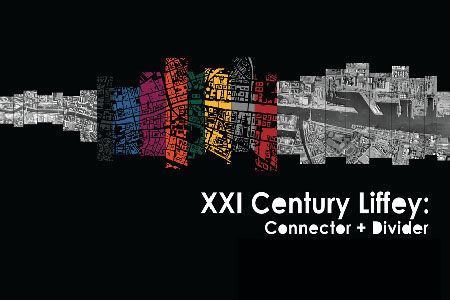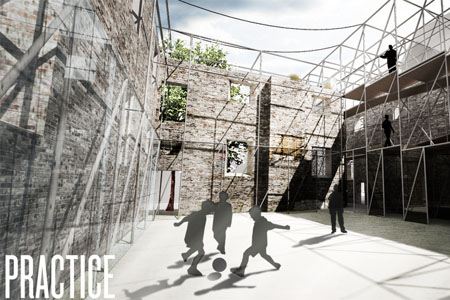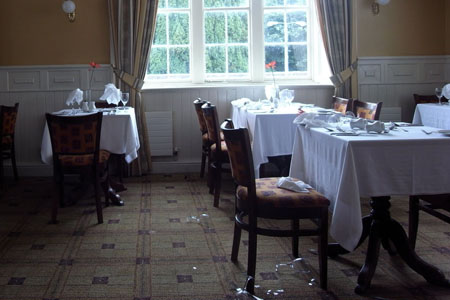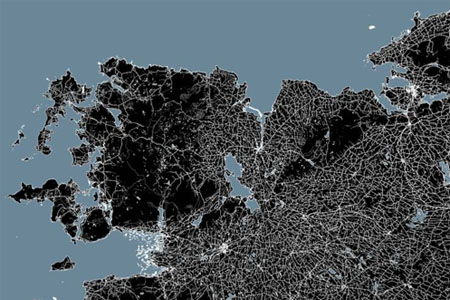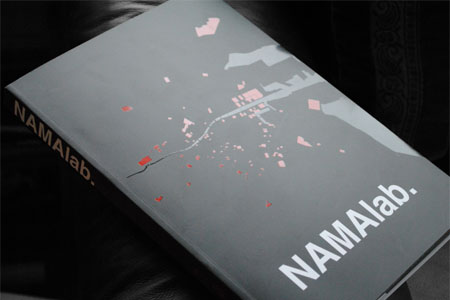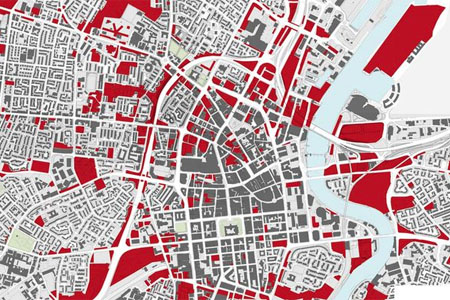Health and Discipline
by Alan Mee
As the term ‘Geography’ becomes more and more like a thin cover for a treasure trove of disciplinary specialities (medical geography, political geography, social geography, population geography, historical, urban, cultural, etc), the idea that ‘spatialising’ information can contribute to our knowledge, health and welfare is growing.
Medical geography, for instance, which researches and maps social and spatial inequalities in health, and deals with the history and potential threat of infectious diseases over wide areas, can bring us loaded information in relation to health. Professor Dennis Pringle at NUIM, Maynooth [1], distinguishes between ‘medical’ and ‘health’ geographers, clarifying his own interest in the medical as the “use of geographical analysis to provide us with insights about health and ill-health”, while health geography for him deals with “how health issues can inform us about the nature of places”.
The Irish Health Atlas [2], for example, on the HSE website indicates the suburban nature of the nursing home provision in this country, so we can see immediately how likely it is that most of us, if we can’t afford a better plan, are likely to grow old in a field, or rather, a single storey, monolithic state sponsored bungalow on a green field site far from amenities like shops, a pub, or a library.
The National Cancer Registry of Ireland publishes national Cancer maps [3], though these seem to have little connection to the spatialisation of the phenomenon. This is partly because the use of the county scale as a breakdown unit is too large for most people to conceptualise in relation to their personal neighbourhood or area. These maps would relate to the scale of the official Radon mapping of the country, unlike the more precise flood mapping. Both are examples of the increasing connections between simultaneous scales mapping (i.e. being able to zoom easily Google Earth style) spatialising, health and safety.
In relation to another current health priority for Ireland, in particular, and especially related to those design professionals who operate in the broader scales of urban design and landscape, detail ‘Obesity Maps’ seem not to be currently available here, indicating to us some health impacts of the ruinous physical development in Ireland of the last fifteen years in particular. In the UK, the Government’s Foresight programme (a fascinating initiative in itself – “Foresight creates challenging visions of the future to ensure effective strategies now”) published a document entitled Tackling Obesities: Future Choices — Obesity System Atlas [4]. This is not a spatial/geographical map, more a systems/factors map or “qualitative, causal loop model” related to obesity. The study includes a ”Full Generic Map, Environmental Activity Cluster (Map 8)”, which highlights the particular contribution of physical surroundings in the UK to the obesity of a person or a group of individuals. Looked at from the design disciplines, it is arguable that the relatively low weighting (no pun intended) given to designed physical surroundings and context may be much less than is actually real on the ground, especially in car-ridden Ireland.
Additional reading in the Ireland-specific health and design research areas, could include Conor Skehan’s “Right to 15 min City” talk, delivered in 2007 to the Academy of Urbanism Conference at Dublin Castle (Space, Place, Life); also the work of Kevin M. Leyden, Professor of Political Science, NUI Galway, invited Honorary Research Professor of Social Science & Public Policy at the Centre for Innovation and Structural Change (CISC) there. This work seems to return to the importance of practical linked, working mid-density (at least) neighbourhoods as a basic foundation for health of individuals and communities. In broader terms, the work of Gregory Bateson, anthropologist, social scientist, linguist, visual anthropologist, semiotician and cyberneticist..!) and the career of Christopher Alexander (just architect and mathematician) come to mind as thinkers who connected the spatial to the healthy at many scales.
The question arises as to the role or scope of influence of the Irish urban designer, architect and landscape architect, thinking, as we do, spatially and having regard to context socially, culturally, as well as environmentally. Jay Stuart, well known architect and energy innovator in building and design, maps energy usage in neighbourhoods in Ireland, adding information for communities about usage, potential efficiencies, but also indicators of possibly redundant layouts, unhealthy forms and morphologies, ultimately embedded in unhealthy systems, often built by us relatively recently. Surely this is a future direction for the Irish designer to go in, diagnosing in advance possible unhealthy layouts, designs, briefs and locations? The disciplines around design, at many scales, can make major contributions, as well as broadening and innovating the scope of the profession in Ireland.
Notes:
[1] www.nuim.ie/staff/dpringle/healthg.shtml
[2] www.hse.ie/eng/services/maps/
[3] www.ncri.ie/maps/pictestmenu.shtml
[4] Vandenbroeck, Ir Philippe, Goossens, WS Dr Jo, Clemens, WS Marshall, (2007), UK Department of Innovation Universities and Skills, www.bis.gov.uk/assets/bispartners/foresight/docs/obesity/11.pdf
This Article appeared in Architecture Ireland Issue 260
Obduracy, Openness and Change
by Alan Mee
The ‘hardening’ of the city fabric, described by Hommels (2005) as obduracy [1], is the subject of increasing research in urban studies and technology studies internationally. It is argued that capitalist expansion can be hampered by the fixity of structures, and social change and technological development are increasingly seen as prominent factors in shaping urban environments, while obduracy is explained as mainly the result of interactions among social groups- interactions that are constrained by specific ways of thinking.
Professional worldviews, of planners, engineers and architects amongst others, are discussed as “difficult to ignore because they are closely related to the professional’s urge for (intellectual) influence and good reputation” [2]. Historic examples of obdurate systems are described (the subways of Paris, bridges to Long Island) and discussion of the physical, social and economic impacts of obsolesence in infrastructure are outlined.
Moving from the city scale to the building, Open Building systems in design thinking are also increasingly relevant to consider. The Open Building Implementation Network (www.open‐building.org) was formed as long ago as 1996, and has origins in the work of N. John Habraken, Author of ‘Supports, an Alternative to Mass Housing’ [3], which was first published in 1962. This book proposed the separation of ‘support’ or base building from ‘infill’ or interior fit-out in residential construction and design. One of the six ideas which help to define the term Open Building describes users/inhabitants involved centrally in making design decisions.
Further development in the area included allowance at design stage for different uses over the life of the building, from residential to office block for example, in response to market, client or community demand. The main areas of influence currently seem to be in residential and healthcare buildings, in the latter case related to the constantly changing technologies of medical treatment, leading to caution about over-fixed building environments.
In Adapt Ability [4], these issues were considered, including a call for current building stock in Ireland to be audited for architectural quality, energy outputs over time, and for ease of adaptability. The blog post also discussed Holland, where building clients have recently started to seek building envelopes, designed to a particular grid, and with increased ceiling heights, which would allow either residential use or office, depending on the market over time. Also permissible would be a variable split in the mix over time, which could allow apartments on upper floors for example, offices on floors below, but it could change later. While this brings challenges for planners, trying to allow for amenity space, balconies and adequate parking, good design can go a long way towards achieving adaptable building stock.
However, one scale between city and building that is possibly neglected in the discussion of obduracy and openness, is the scale of the neighbourhood. Though Habraken’s later book, “Structure of the Ordinary” [5] deals with the “field”, (described by him as the “ubiquitous and autonomous built environment”, also the subject of his last book [6]) or the broader designed environment, there is relatively little study on the adaptability of the typical urban neighbourhood, in the sense that this would be understood for the building, or the city.
So for example, consider a relatively recent Irish mutant building type, the 1970’s office blocks built in places such as along Mount Street Lower in Dublin. The idea of technological change being applied to these buildings, which mainly replaced Georgian terraces of houses, involves seriously considering replacement rather than upgrading for energy efficiency or conversion back to residential. The knock-on implication is that the neighbourhood looses the opportunity to efficiently re-balance with a living population, to replace the mainly commuter population of the office blocks. An “Open Neighbourhood” approach might involve assessments of building stock at this neighbourhood scale, with broad indicators emerging of the potentials for areas to improve and evolve over time. Certain parts of neighbourhoods could be designated for Open Building, without negatively affecting the character of the place, in a way similar to the calls of the self-build movement in Holland and the UK for areas within cities to be given over to this method.
[1] Hommels, Anique, (2005), Studying Obduracy in the City; Toward a Productive Fusion between Technology Studies and Urban Studies, Science, Technology and Human Values, Vol. 30, No 3 pp 323-351, Sage Publications Inc.,USA.
[2] Ibid, Pg 334.
[3] Habraken, N. John, (1999) “Supports: an Alternative to Mass Housing”, Edited by Jonathan Teicher, Urban International Press, UK. Edited reprint of the 1972 English edition. ( English edition 1972, re-issued in 1999).
[4] Mee, Alan (2009), “Adapt Ability”, IAF Blog, until Dec 2011, now at www.urbanagenda.ie
[5] Habraken, N. John, (1998) “Structure of the Ordinary, Form and Control in the Built Environment”, Edited by Jonathan Teicher, MIT Press, Cambridge and London.
[6] Habraken, N. John, (2005), “Palladio’s Children, Essays on Everyday Environment and the Architect”, Edited by Jonathan Teicher, Taylor & Francis, UK.
This Article appeared in Architecture Ireland Issue 260
The Ethics of Aesthetics
by Alan Mee
“It is my job to create universes…I have a secret love of chaos. There should be more of it. Do not believe -and I am dead serious when I say this – do not assume that order and stability are always good, in a society or in a universe”.[i]
No, not Rem himself, but the opening quotation chosen by him for the current retrospective exhibition at the Barbican, on the truly staggering output of OMA. In breadth and extent, as well as quality and overall geographical reach, there’s really nothing to touch this global spatial production machine, which originated in Holland.
One comes away quite shellshocked and overwhelmed, and if there’s any brain space left to review the prodigious heap of other OMA publications, books and graphical documents in the reception area, there must be an impression of a Spatial Superman forming, with a race of avid followers towing along behind, testing, thinking, sweating, making, making, making.
Then professional jealousy creeps in, as it would have to do, for any other designer visitor. Who could not be jealous of an operation which has re-invented the Map (and flag) of Europe, written key texts on urbanism and architecture, designed so many buildings of global significance, and still has a big order book of things to deliver and work on ?
But is it all a just spatial practice ?
On reflection, this is the key question which arises. When anything is possible, and clients and budgets invite the most preposterous of formal gymnastics and shape throwing, is there a need for a moral or ethical self-control button ?
The entry statement seems to suggest that there’s a justification being offered for what we are about to see, as if he knows how bold he has been. The problem is not just him, but also the armies of keen followers (and countries, and cultures, and clients) who are being set a poor example of vomiting creativity without a moral core.
Much much closer to home and us, (though not totally disconnected) the RIAI Conference 2011, in Carlow, was dominated by issues of ethical relevance. One session involved a very near miss between those in the room who are undercutting fees, and some of those most affected. Another had the Minister for Education describing the ethical aspects of locating schools on outskirts of towns, thereby sentencing generations of children to car based transport, the social segregation from the street, and ultimately, unsustainable ways to be. (Is it possible to do ethical mapping of our spatially chaotic condition ? ) Kenneth Frampton seemed to be updating critical regionalism with an ethical turn, locally inspired and modest architecture, with resonance in cultural terms. Conor Skehan exploded a few verbal devices as usual, predicting impending radical change in the very definition of the professional, and suggesting the Institute needs to re-examine itself and its position as regards broader types of architectural practice and membership.
The contractual and working conditions of young graduates were described by delegates and students as leaving lots to be desired, and the Director reminded the audience that the Institute and other authorities cannot act unless someone puts a head above the parapet to report those who may be acting unlawfully and unethically.
The question developing of course was ; What would a future more ethical model for the practice and culture of design in Ireland look like ? With our recent absences of monitoring of regulation, our neo-liberal models for urban form, which are unsustainable, spatially unjust, and economically self defeating, what have we learned ?
What would design output of an ethical cultural shift be ? Less construction ? Is it possible our current obsession with training ‘projective design’ architects towards more inclusion for the assessment / evaluative architects, those trained to make analysis and quality judgements, on whether something should be protected, adapted, demolished, extended, etc, without also having to produce more superfluous space ?
Imagine if our culture and designed environment became associated with ethical practices, in the processes as well as the output ? Maybe an island where positive cultural change can happen quickly could appear, as we re-invent ourselves with new priorities, linking theory on fairness and spatial justice to how we work, how we look, how we appear, and how we think.
[i] Dick, Philip K, (1978),‘How to build a universe that doesn’t fall apart two days later’.
This Article appeared in Architecture Ireland Issue 259
Urban Neglect
by Alan Mee
While it could be said that in Ireland, neglect in the countryside has been forever with us, and the isolated ruin has an almost romantic appeal[i], urban neglect seems to be more recent, and at this point, pervasive nationwide.
Do we neglect our designed environment in Ireland more than other cultures and countries? Given our historically lower densities of population over time, particularly in the countryside, Ireland has not been pushed to re-use its built heritage to accommodate expanding populations, and possibly we associated doing this with poverty, or not moving on.
More recently, with an actively densifying urban culture, it has seemed that generations of broadly suitable urban structures are consigned to some cultural scrapheap, as the newness of urban living is expressed through teen-like mutant building typologies alongside their silent, more mature building neighbours, such as the street shop with house over, most of which are respectably rotting in towns all over the island.
Over twenty five years ago, Barcelona began a city led campaign called Posa’t Guapa (make yourself beautiful), which encouraged the renovation of buildings, as a visible first step in renewing the older building stock. In that time, over 30 per cent of the 87,000 buildings in the City area have benefited from public subvention to renew facades and other parts, and each was covered by the same branded poster during the works. As well as prolonging the life of such essentials to apartment living as balconies, shutters, and other architectural details, the urban image of the city became live again, more like a growing thing than a dying one.
The current mood amongst conservation professionals here in Ireland is dark, as they survey a rapid deterioration of structures and groups of buildings which managed to survive the twentieth century, but ended up in NAMA or attached to planning permissions which have not turned into reality. The sites most at risk seem to be caught in a fog of unclear ownership and responsibility, which in turn is working to the advantage of those who would be happier to see them gone. At this point, there is a need for national scale campaign, run by the Department of the Environment, Community and Local Government and/or the Heritage Council to actively catalogue the urban properties most at risk, and re-state through action the position of the State as regards our urban built heritage.
On the most superficial of levels, the growing graffiti ‘creep’ across the built landscape of Dublin is observed officially, if at all, by the daily clean, scraping away at hundred year old walls, or re-painting surfaces only recently finished for the first time. The arguments for and against are made, and after a few minutes on www.dublincitygraffiti.com you will come away with a whole new reading of the “tags”, “throw-ups” and “pieces” of the city, whether you like them or not. What does this say about the current state of the place ? Is it an indicator of a vibrant visual culture with individual artistry on show on every street corner, or an increasingly depressing indicator of anarchy and urban breakdown ? The discussion internationally can be summed up in the thePolisblog.org discussion, “Graffiti as International Language” [ii], which elaborates on the themes without coming down on either side.
The fact is, that either way, buildings and streetscapes of value are being changed, some irreversibly, and there seems to be no mechanism to communicate the issues to a wider audience. Neither side seems readily identifiable, or even visibly engaged in an exchange, whatever the value this might have. Where are the officials to protect Iveagh Markets on Francis Street in Dublin, the frontage of which survived for over a hundred years until last month, when it was destroyed beyond repair by “artists” ? Graffiti could be argued to be one of the indicators of neglect, like buddleia[iii], and unlike Berlin or London, Dublin has only a relatively small number of buildings and streetscapes of quality, and worthy of care.
Is it possible that Dublin City Council, perhaps together with Dublin Civic Trust, could engage with some collective of the graffiti artists, to explain the craftmanship and dedication involved in making a piece of cut stone appear 100 years ago on a street corner ? As artists themselves, surely they could be brought around to an understanding of the complexity and creativity involved in realising a piece of architecture ? And the knowledge and care required to preserve and maintain it ?
As in the case of other cities like Barcelona, it is arguable that the evidence of care of the urban environment should be immediately apparent, particularly for visitors, and that certain places could be prioritized, related obviously to relative value, but also to urban prominence. As a pilot project this October, Urban Agenda, Open House and Dublin Civic Trust will organize an Urban Check-Up Walking Tour, centred on the Liberties in Dublin, which involves demonstrating methods of measuring and evaluating architecture and its context, and levels of apparent urban neglect, using various recording methods such as drawing, photography, video, etc, and then digitally submitting information to the relevant authorities to assist in addressing this urban neglect. The purpose is to demonstrate collective assessment and engagement in quality and care in architecture and the urban environment, but also active urban citizenship.
[i] as represented recently at the IRCHSS Summer School at Maynooth Lecture by Brian Dillon and Catherine Waugh, http://briangdillon.wordpress.com/my-books/
[ii] http://www.thepolisblog.org/2011/08/global-mobility-of-graffiti.html
[iii] Buddleia Open House Walking Tour, Irish Architecture Foundation, 2009
This Article appeared in Architecture Ireland Issue 258
